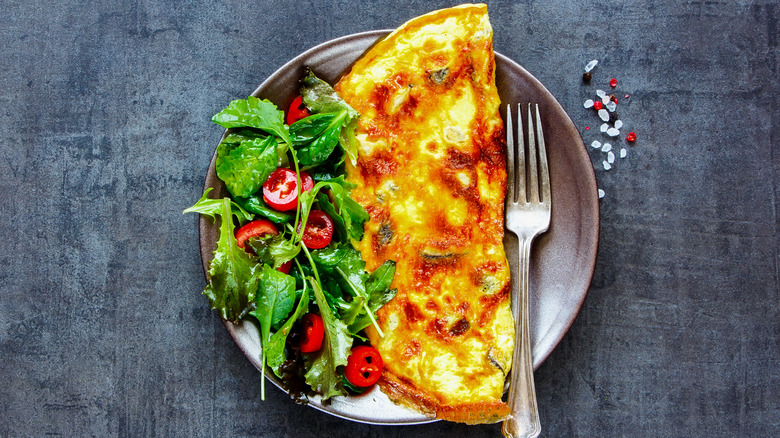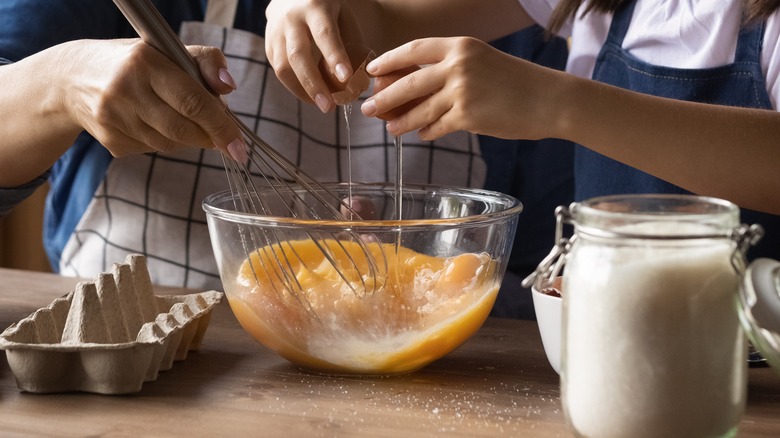You Shouldn't Be Handling Eggs For Omelets So Gently
An omelet is one of those perfect meals. Packed with protein and nutrients, omelets needn't be reserved for solely breakfast. They make a great lunch or light dinner and are as adaptable and diverse as the cooks who make them. However, there are pitfalls everyone falls into when making omelets. One such mistake occurs at the very beginning of the process — beating the eggs.
Eggs can withstand a decent amount of force when it comes time to scramble them for omelets. While many omelet recipes will tell you to "lightly beat" the eggs, this doesn't mean that you whisk them gently for just a few seconds and then you're done. If you under beat your eggs, you're going to have a mess of an omelet. What you need to aim for is a cohesive whole, with no strands of white or yellow left behind and you cannot be gentle when doing this.
How you beat the eggs impacts the aesthetics, taste, and texture of your omelet
With either a fork or a proper whisk, use both up-and-down and back-and-forth motions to get a complete mixing of the eggs. They should be frothy and have a completely light yellow color all around. It's also important to note that beating your eggs properly doesn't just have to do with how your breakfast looks, it impacts the taste and textural outcome of your meal.
A well-cooked omelet should have an element of lightness to it. This is made possible with the introduction of air brought in as a result of beating the eggs properly. Under-beaten omelets can be dense and more concentrated in their eggy flavor. The best way to ensure a light and fluffy texture without the addition of egg whites or milk is to properly beat the eggs with a little bit of water that will steam as the omelet cooks. With this technique in mind, you'll get perfect omelets every time.

